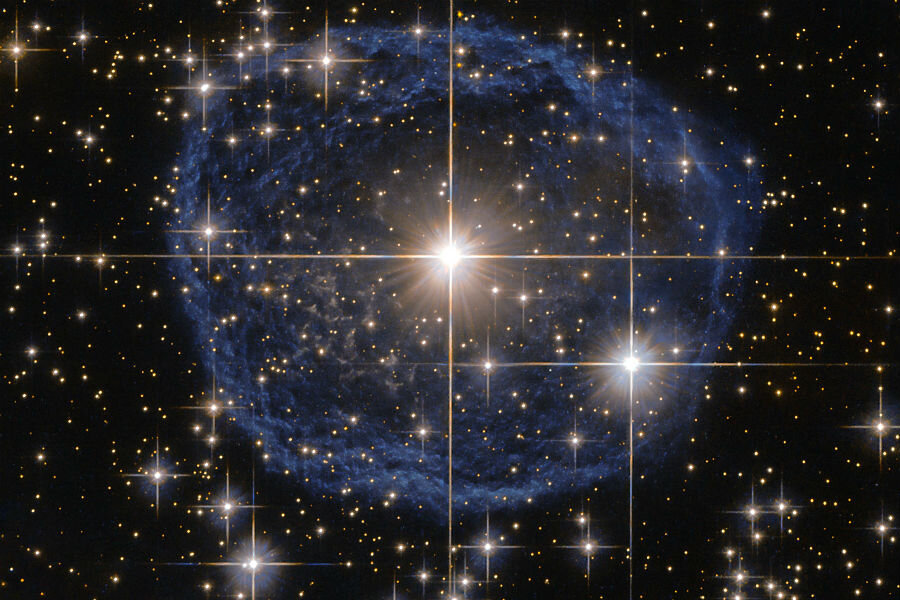Hubble snaps picture of cosmic blue 'bubble'
Loading...
A new image taken recently by the Hubble Space Telescope captured a millennia-old blue “bubble” in the Carina constellation.
The bubble, a 20,000-year-old nebula, is centered around the Wolf–Rayet (WR) star WR 31a. WR stars are categorized as plasma spheres identifiable by their broad emission lines of helium, nitrogen, and carbon that are especially hot and massive. WR stars are also shorter-lived than other types of stellar bodies, with life spans of only a few hundred thousand years, according to the National Aeronautics and Space Administration (NASA).
Compared with the Sun of our own solar system, WR stars can be around 20 times as massive, 5 to 30 times as hot, and tens of thousands to millions of times as bright. But that energy output means than within 100,000 years, they are likely to lose about half of their mass, whereas the Sun has been active for billions of years and is only in the middle of its cosmic life.
The intense energy contained in WR stars coupled with their rapid mass offloading causes large stellar winds of particles to blast from the Wolf-Rayet bodies into space. This, coupled with layers of hydrogen ejected by WR stars, causes the formation of nebulae like the one surrounding WR 31a captured by the Hubble. That WR nebula is simply a cloud of dust and gases such as hydrogen and helium, and is currently expanding at about 136,000 miles per hour.
This is not the first time such a cosmic bubble has been picked up by the Hubble, and some are even visible to the naked eye. The brightest and most massive known star, RMC 136a1, is a WR body in the Tarantula Nebula, or 30 Doradus, around 163,000 light years from Earth. WR 31a in Carina is about 30,000 light years away.
Like all stars, WR 31a is constantly evolving. And as with most stars of its size, WR 31a will “eventually end its life as a spectacular supernova, and the stellar material expelled from its explosion will later nourish a new generation of stars and planets,” according to NASA.








